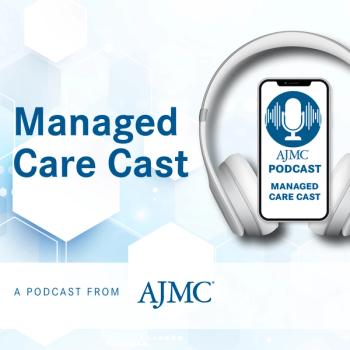
Medicare State Rankings Reveal Stark Differences in Access, Quality, and Affordability
Key Takeaways
- Vermont, Utah, and Minnesota excel in Medicare performance, while Louisiana, Mississippi, and Kentucky rank lowest, showing regional disparities.
- The evaluation used 31 indicators across access, quality, costs, and population health, revealing significant state-level differences.
A new report shows Vermont, Utah, and Minnesota lead, while Louisiana, Mississippi, and Kentucky lag in Medicare performance.
For the first time, the Commonwealth Fund has ranked all 50 states and the District of Columbia on how effectively Medicare serves its residents. Vermont, Utah, and Minnesota topped the list for access, quality, and affordability, while Louisiana, Mississippi, and Kentucky ranked lowest, highlighting significant regional differences for more than 68 million beneficiaries.
The State Scorecard on Medicare Performance: How Medicare Is Working for Its Beneficiaries evaluated 31 indicators across 4 domains: access to care, quality of care, costs and affordability, and population health. Data came from the latest publicly available sources, including CMS, federal surveys, and vital statistics. Each state’s overall score reflected performance across all indicators, weighted equally, providing a comprehensive picture of how Medicare functions nationwide.
Important variations in age, income, and financial resources among the profile of Medicare beneficiaries surveyed highlighted differences in demand for care and state-level policy decisions, especially in states with higher shares of older adults or people with disabilities. Income and asset disparities across states were also found to influence beneficiaries’ ability to pay for services not fully covered by Medicare.
“It's really important to highlight that there are tradeoffs between traditional Medicare and Medicare Advantage, and the balance of those tradeoffs may be very different from one person to the next, so it's really important for people to take a look at all of their [beneficiaries’] options and really decide, given all of the differences, what works best for them, given in most places, the many, many options that are available to people, with more than 40 Medicare Advantage options available to most beneficiaries, plus traditional Medicare,” Gretchen Jacobson, PhD, vice president of Medicare at the Commonwealth Fund, said to The American Journal of Managed Care® (AJMC®).
Access to Care
National data show that fewer than 5% of adults 65 years and older lack a regular health care provider, though this share is higher in rural states like Wyoming, Alaska, and New Mexico, where provider shortages and longer travel distances pose challenges. The prevalence of prior authorization varied widely by state, from under 20% of plans in Wyoming, Vermont, North Dakota, and South Dakota to over 70% in Virginia and Washington. Moreover, 22% of Medicare Advantage enrollees reported care delays due to prior authorization, compared with 13% in traditional Medicare.
Quality of Care
The report found that the quality of care for Medicare beneficiaries varies widely across states and is shaped by both program-related factors and broader health system conditions. Medicare plans’ coverage, provider participation requirements, and financial incentives were found to influence care quality, while state licensing, provider training, care coordination, and social support systems were also found to play a role. The use of high-risk medications was the highest in Southeastern states, including Louisiana, Florida, Alabama, Arkansas, and West Virginia. Preventable hospitalizations, often linked to poorly managed chronic conditions or delayed detection, also varied sharply by state, with fewer than 20 per 1000 beneficiaries in Idaho and Utah, compared with nearly 35 per 1000 in Kentucky, Massachusetts, and West Virginia.
Costs and Affordability
Cost and affordability between Medicare beneficiaries also varied widely across states, influenced by provider payment rates, plan generosity, and the use of both covered and uncovered services. Nationally, 3.8% of adults 65 years and older reported skipping care due to cost, with rates ranging from 1.6% in Vermont to 6.0% in Louisiana. Prescription drug costs varied by state and plan type, with beneficiaries in rural Western and Upper Great Plains states paying a larger share out of pocket than those in other regions.
Population Health
The report also highlighted how population health among Medicare beneficiaries is shaped by a combination of medical care, social supports, and broader socioeconomic factors. About two-thirds of traditional Medicare enrollees were found to have 3 or more chronic conditions, requiring extra care and coordination, though fewer beneficiaries in rural states like Wyoming, Alaska, Vermont, and Montana met this threshold.
Loneliness is another widespread concern, with at least 1 in 4 older adults reporting inadequate emotional support, a factor linked to poorer health outcomes and higher health care use. Life expectancy at age 65 varied dramatically across states—from 20.6 years in Hawaii to 16.1 years in Mississippi and West Virginia—reflecting differences in public health policies, social conditions, and access to care. Interestingly, Hawaii combines the longest life expectancy with the lowest Medicare spending per beneficiary, while many high-spending states, particularly in the Southeast, fall below the national average. These findings underscore how both medical and nonmedical factors before and during Medicare enrollment influence health outcomes and highlight opportunities to strengthen population health nationwide.
“Clearly, a state’s health care infrastructure, its clinical practice norms, and its policies affect all state residents, including Medicare beneficiaries, and investments in the health care system benefit everyone,” wrote the researchers of the survey. “This confluence of state and federal health policy is what enables beneficiaries to get the health care they need and ultimately affects their health outcomes and experiences with health care.”
References
- First state-by-state Medicare scorecard exposes wide variation in health care access, cost, and quality for billions of beneficiaries. News release. Commonwealth Fund. October 16, 2025. Accessed October 15, 2025.
- Jacobson G, Kolb K, Burbank CM, et al. State scorecard on Medicare performance. Commonwealth Fund. October 16, 2025. Accessed October 15, 2025.
Newsletter
Stay ahead of policy, cost, and value—subscribe to AJMC for expert insights at the intersection of clinical care and health economics.







































